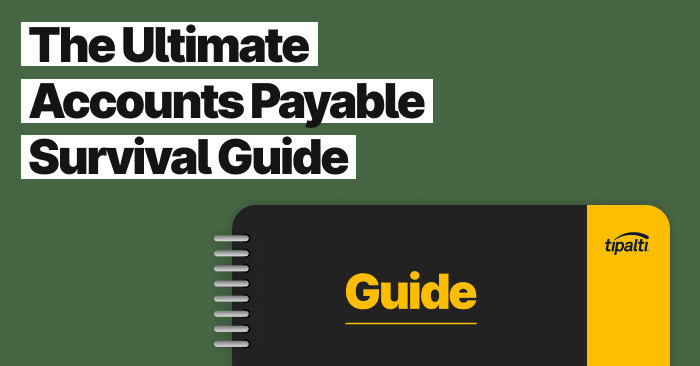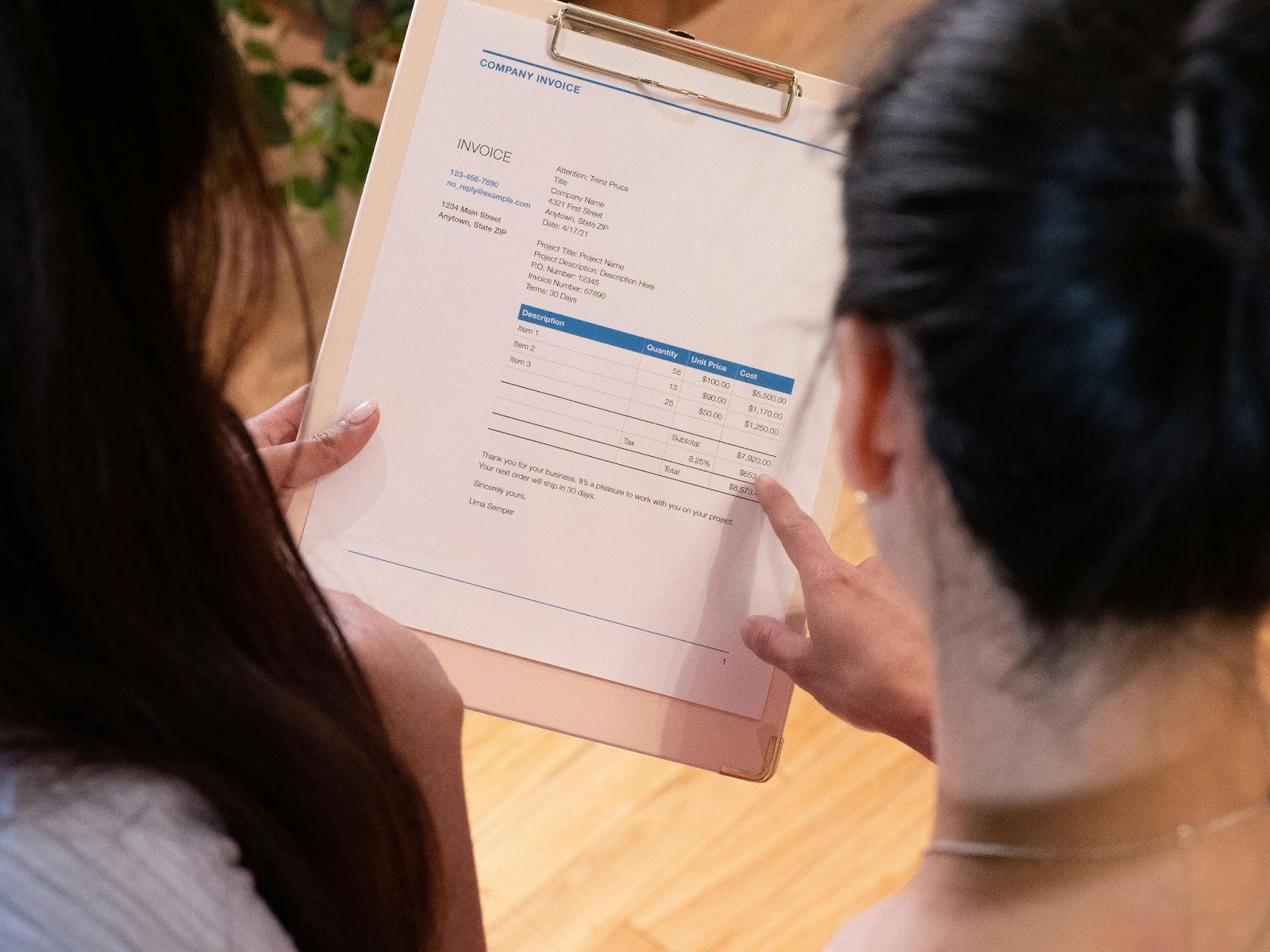
See how forward-thinking finance teams are future-proofing their organizations through AP automation.
Fill out the form to get your free eBook.

Today, the finance function has more responsibilities than ever. In high-growth businesses, every operation—both front and back-office—is inexplicably tied to investment versus reward. To survive the uncharted road ahead, the modern, forward-thinking finance team has to future-proof their organization for success. Download the guide to discover: – The untamed wilderness of finance – How to forge an accounts payable path – How to strategize your next move – The ultimate accounts payable survival tool – How real-life survivalists scaled their businesses
What is Net 30 on an Invoice?
In the U.S., “net 30” refers to a very common payment term that means a customer has a 30-day length of time (or payment period) to pay their full invoice balance. Net 30 payment term is used for businesses selling to other businesses, and the 30 days includes weekends and holidays.

Key Takeaways
- Net 30 is an invoice payment term for paying in 30 days.
- Net 30 requires customers to pay in full 30 days after the invoice date.
- Net 30 can be combined with an early payment discount.
- 2/10 net 30 offers a 2% discount for paying an invoice within 10 days.
- Suppliers offer other invoice terms to encourage early payment.
The Meaning of Net 30
Net 30 is a payment term allowing approved customers to pay invoices interest-free as accounts payable with a 30-day due date after the invoice date. For example, if an invoice date is May 1st, the invoice is due 30 days later, on May 31st.
You can consider a payment term, also called a trade credit, as a no-interest loan to your customer. Instead of demanding immediate payment for a sale, with a net 30 payment term, you are lending your customers money for 30 days.
Combining Net 30 with an Early Payment Discount
In B2B, the Net 30 term is often combined with an early payment discount (prompt payment discount). The customer can pay the bill within 30 days to meet that term or earlier for a discount if the supplier offers one.
For example, 2/10 net 30 is an early payment discount: pay the invoice within 10 days from the invoice date for a 2% discount or within 11 to 30 days for no discount.

When Does Net 30 Start?
To offer Net 30 terms, you must have sufficient cash flow to float the equivalent of a 30-day loan. But when does net 30 start?
- The date of the invoice?
- The day your product shipped?
- The day it reached your customer?
- Some other trigger?
The payment term’s start date can be any of those options. The key is ensuring the terms are agreed to upfront – before the sale is even made.
Consider this scenario:
- You send an invoice with net 30 terms.
- In your mind, the 30-day countdown starts on the date of the invoice.
- In your customer’s mind, the 30-day countdown starts on the date they received the invoice.
When the customer pays you on time, according to their understanding of the net 30 terms, you feel they have not honored the agreement. To you, they have made a late payment, so the relationship is strained.
How you resolve this misunderstanding will determine whether you retain that client or customer. That’s why it’s important to precisely define when the clock starts ticking on your net 30 term. In most cases today, it starts at the invoice date, which is usually the shipping date.
Net 30 vs. Due in 30 Days
Net 30 payment terms and “due in 30 days” generally refer to the same outcome: your supplier wants you to pay the invoice in one month.
Net 30 vs. Due in 30 Days is highlighted in this table.
| Net 30 | Due in 30 Days | |
|---|---|---|
| Due date | Same | Same |
| Combined with an early payment discount | Sometimes | No |
| Used by businesses | Yes, especially in B2B | Yes, and generally used for personal bills, with due date specified |
Due in 30 days more often applies to personal expenses such as utility bills, telephone bills, mortgage statements, and related expenses. You have 30 days to pay the bill before incurring a penalty or surcharge in these cases.
How to Use Net 30 Terms
When using business Net 30 terms, consider the following:
- Do your customers pay their invoices on time? If they do and your business finances are healthy, there’s no incentive to offer an early payment discount.
- How steady is your business cash flow? If it is having cash flow issues, offering early payment discounts with the net 30 term can help accelerate revenue collection and improve cash flow.
- What are the payment terms used by other companies in your industry? You could implement shorter payment terms, such as Net 15 or Net 20 to improve cash flow if those terms are common in your industry.
- When are your company’s bills due? If your accounts payable turnover is faster than your accounts receivable turnover (you pay bills faster but take longer to collect), that can lead to cash flow problems. If possible, consider tighter payment terms than Net 30 and accelerate AR collection.
- Who has the dominant position in the relationship? The financially stronger company often holds the advantage in payment terms negotiations. However, if a smaller supplier provides key products or services, that supplier can dictate payment terms.
Examples of Net 30 Payment Terms with Early Payment Discounts
Here are examples of net 30 payment terms combined with discounted rates for early payment.
| Early Payment Discount Terms | Discount Means | Annualized Return on Cash* | Early Payment Discount on $1,000 Invoice dated May 1st | Net Invoice Amount Payable after Early Discount |
|---|---|---|---|---|
| 2/10 Net 30 | 2% discount if you pay within 10 days. | 36% | $20if paid by May 11th | $980 |
| 1/15 Net 30 | 1% discount if you pay within 15 days. | 24% | $10if paid by May 16th | $990 |
| 1/10 Net 30 | 1% discount if you pay within 10 days. | 18% | $10if paid by May 11th | $990 |
| 1/5 Net 30 | 1% discount if you pay within 5 days. That’s a 14.4% return on cash for the discount. | 14.4% | $10if paid by May 6th | $990 |
*To calculate the annualized return of an early payment discount, divide the number of days you accelerate payment ahead of the due date by 360 (to represent the days in a year, rounded down), and multiply that number by the early payment discount rate.
Pros and Cons of Net 30 Terms
Seller Pros
- Meets customer expectations. Net 30 is a standard payment term.
- Builds goodwill and conveys trust in your customers.
- Standardizes cash flow and streamlines your budgets.
- Attracts and retains new customers.
- Reduces bad debt. Customers can usually pay within 30 days.
- Builds revenues. Net 30 terms make it easier for new and small businesses to buy goods and services, translating into more business for the seller.
Seller Cons
- A Net 30 payment term can extend to net 45, net 60, or net 90, straining cash flow—especially with small businesses, financially struggling clients, or large, high-leverage customers.
- If others in their industry have shorter payment terms such as 20, 15, or even pay in five days, the net 30 payment term presents a disadvantage.
- If the early payment discount offers an exceptionally high annual rate of return to the buyer, as shown in the earlier table, the seller would be paying a high interest rate in exchange for getting their cash sooner.
- If you are a startup business, you may end up strapped by extending credit to your buyers. While giving them the benefit of time, you could be setting yourself up for failure if you don’t have the cash reserves to compensate for delays in payments.
Buyer Pros
- Net 30 is interest-free vendor financing.
- The ability to delay payment to 30 days improves a buyer’s liquidity.
- Net 30 terms make financial planning and budgeting easy (or at least easier).
Buyer Cons
- Not significant.
Net 30 Alternatives
While net 30 has been a standard payment term for businesses, longer payment terms have become a standard in specific industries and circumstances. These include net 15, net 45, net 60, and net 90.
Net 15
Net 15 is a credit term, meaning the invoice payment is due 15 days after the invoice date.
Net 45
Net 45 is an invoice payment term for customers paying invoices 45 days after the invoice date. Used mainly for business-to-business (B2B) transactions, it offers customers an additional 15 days beyond more common net 30 payment terms to make their payment.
Net 60
Net 60 is a more generous payment term, allowing customers to pay invoices 60 days after the invoice date.
Net 90
Net 90 means that the invoice is due for payment to the supplier 90 days after the invoice date.
Net 30 vs. Net 90 Benefits
Net 30 benefits the seller, as it accelerates the time it takes to recognize revenues compared to these other payment terms.
Conversely, Net 90 payment terms greatly benefit the buyer, as the seller is essentially extending an interest-free loan for those 90 days, helping the buyer to improve their cash flow at the seller’s expense.
COD Terms
For some business transactions, there are no credit terms. Immediate payment is demanded at the time of purchase of the product or service. This typically would occur in a case where the buyer has a poor payment track record or no record at all.
The following table summarizes various invoice payment terms:
| Invoice Payment Term | Meaning | Due Date for Invoice Date May 1st |
|---|---|---|
| Net 15 | Due 15 days after invoice date. | May 16th |
| Net 30 | Due 30 days after invoice date. | May 31st |
| 2/10 Net 30 | Due 30 days after invoice date or pay 10 days after invoice date for 2% early payment discount (EPD). | May 11th for EPD or May 31st paying full invoice amount |
| Net 45 | Due 45 days after invoice date. | June 15th |
| Net 60 | Due 60 days after invoice date. | June 30th |
| Net 90 | Due 90 days after invoice date. | July 30th |
Should You Use Net 30 Payment Terms for Your Business?
To determine whether to use Net 30 payment terms, you should consider the answers to these business questions:
- What is the standard payment term in your industry?
- Would a more favorable payment term improve your cash flow?
- Do you have leverage with customers or limited business competition?
- Could you negotiate distinct payment terms with different customers to provide your business with a financial benefit?
If you are a new business or in a weak bargaining position, you may be unable to buck the standard. The net 30 payment term may be expected as the default.
Automate Net 30 for Faster Payments
For sellers, net 30 payment terms help to generate business, as it is the equivalent of extending an interest-free loan to customers for those 30 days. The net 30 term could be standard in your industry, is readily understood, and often expected.
When cash flow or financing is sufficient, buyers must take early payment discounts combined with net 30 terms for cost reduction, better cash flow, and increased gross margin and profitability.
Tipalti AP automation software uses digital transformation to let buyers process supplier invoices on time to take lucrative early payment discounts like 2/10 net 30.
FAQs
Is Net 30 legally binding?
When part of a contract that includes terms, Net 30 is legally binding to require payment within 30 days. An accepted purchase order is considered a legally binding contract.
In common practice, suppliers don’t require businesses to pay within 30 days or face contract enforcement actions, but they will repeatedly request payment from customers with overdue invoices and have the option to charge interest.
Is Net 30 negotiable?
Invoice payment terms like 2/10, Net 30, or variations thereof, are negotiable for strong customers with good credit history. Offering payment terms is a standard practice for many industries.
